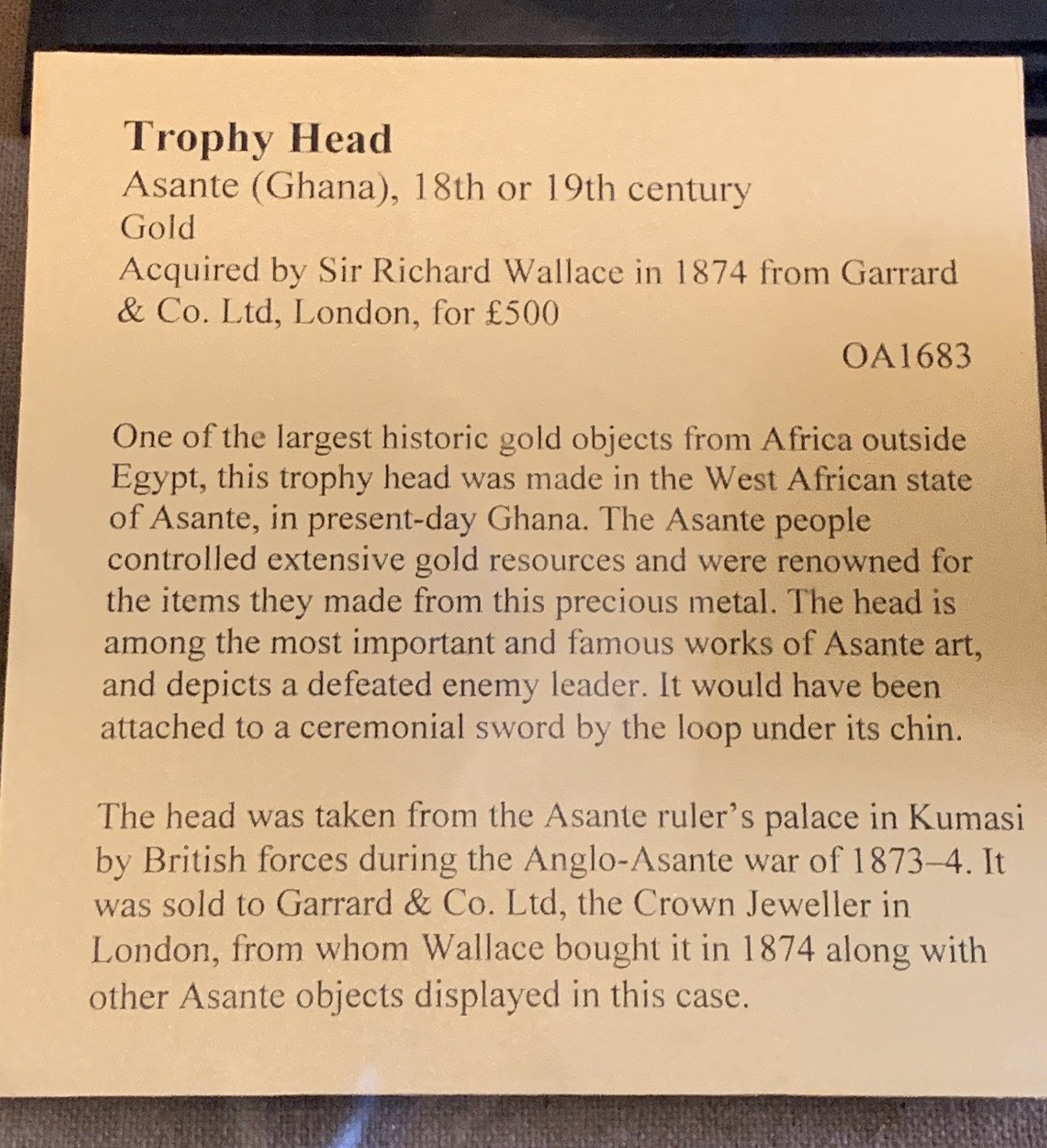Cultural Restitution
SHARE ARTICLE
One of the greatest treasures in The Wallace Collection is also one of its least well-known.
The gold trophy head from the royal palace of the Asante king, Kofi-Karikari, (whose kingdom lay within present-day Ghana) was one of the stand-out exhibits in last year’s special exhibition at the Wallace Collection, Sir Richard Wallace: The Collector. After the exhibition closed, the head was returned to the bottom of its ancient vitrine, located rather incongruously within the museum’s crowded Oriental Armoury collection. Here it will be overlooked by everyone except the most determined.
The spotlight has definitely been removed from this remarkable gold Asante treasure.
But here's our suggestion. Why not reinstate that same label with its narrative that helped so many admire the head in last year’s exhibition? That way future visitors will be able to enjoy it as much as those who saw the head at the Richard Wallace exhibition. There’s so much more to say about its history, context and acquisition than suggested by its current label, which very simply reads: '19th century or earlier'.
But right now, it remains unspoken.
Why is it concerning that more visitors are not encouraged to learn about this fabulous gold treasure? Because the head probably ranks as the single finest item of Asante gold in any public collection (there may be others in private collections, but nobody’s quite sure).
However, there’s another reason. The head was looted in 1874 by British troops during the 3rd Anglo-Asante War (1873-74) on a punitive raid against the Asante people. Weighing in at 1.36kg, it was cast in the 18th or 19th century with features suggesting the head is neither the king nor any other Asante male. It probably represents the head of an enemy and was originally attached to a ceremonial sword. Apparently, there’s a small loop at the back of the head (not visible) which confirms this.
The head passed through the European art market and was eventually purchased by Sir Richard Wallace, entirely legally, from the royal jeweller Garrard & Co, along with a number of other Asante items, for the princely sum of £500.
As the head is such a pre-eminent survivor of Asante history, the modern state of Ghana has expressed an interest in seeing the head returned, although I understand no formal request for its restitution has been made since the reigning Asantehene submitted a request in 1974.
Would a formal request from Ghana to return the head ever be considered by the trustees? There are certainly prohibitions on how the collection should be preserved as a result of Lady Wallace's bequest. Also, the head was purchased legally and in good faith. But according to the Wallace's Collections Management Policy (last updated in July 2016), the museum's governing body, acting on the advice of the museum's professional staff, may take a decision, on a case by case basis, to return an object to a country or people of origin.
Meanwhile, this doesn’t mean the Wallace couldn’t do more right now to share the history and significance of this magnificent Asante masterpiece. To ignore its context altogether is to ignore the heritage of the Asante people and our engagement with them during a brief but important period in British history.
The absence of a better narrative and context is almost an invitation for Ghana to question whether it’s right the head should be left so unappreciated in London.
After this was written.......
On a visit to the Wallace Collection (18 December 2019), dedicated signage for the Asante gold head has been added to its display case. It's great to see the Collection has responded to requests for more information about this important artefact. It's display case is still less than ideal, but more detailed information is an important step forward.
More News




